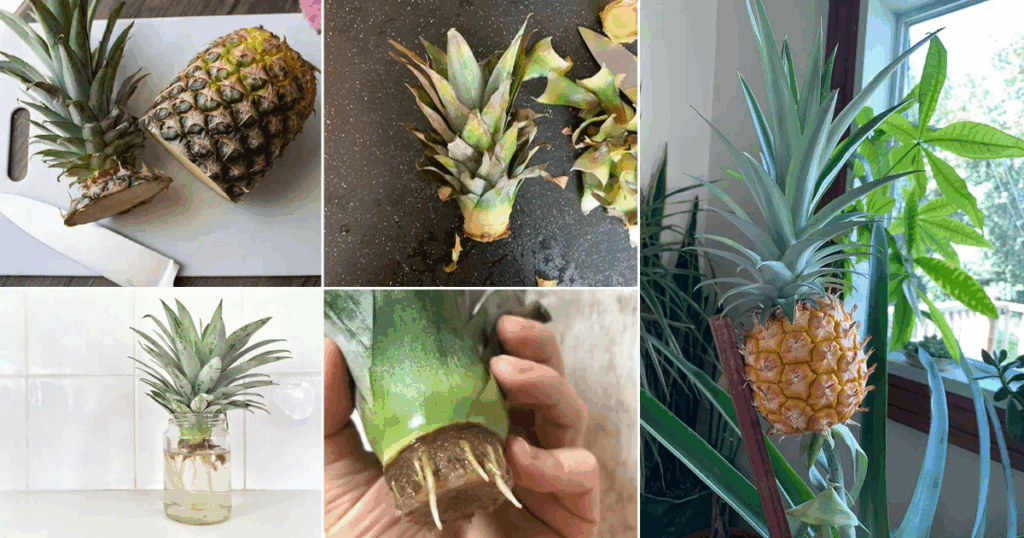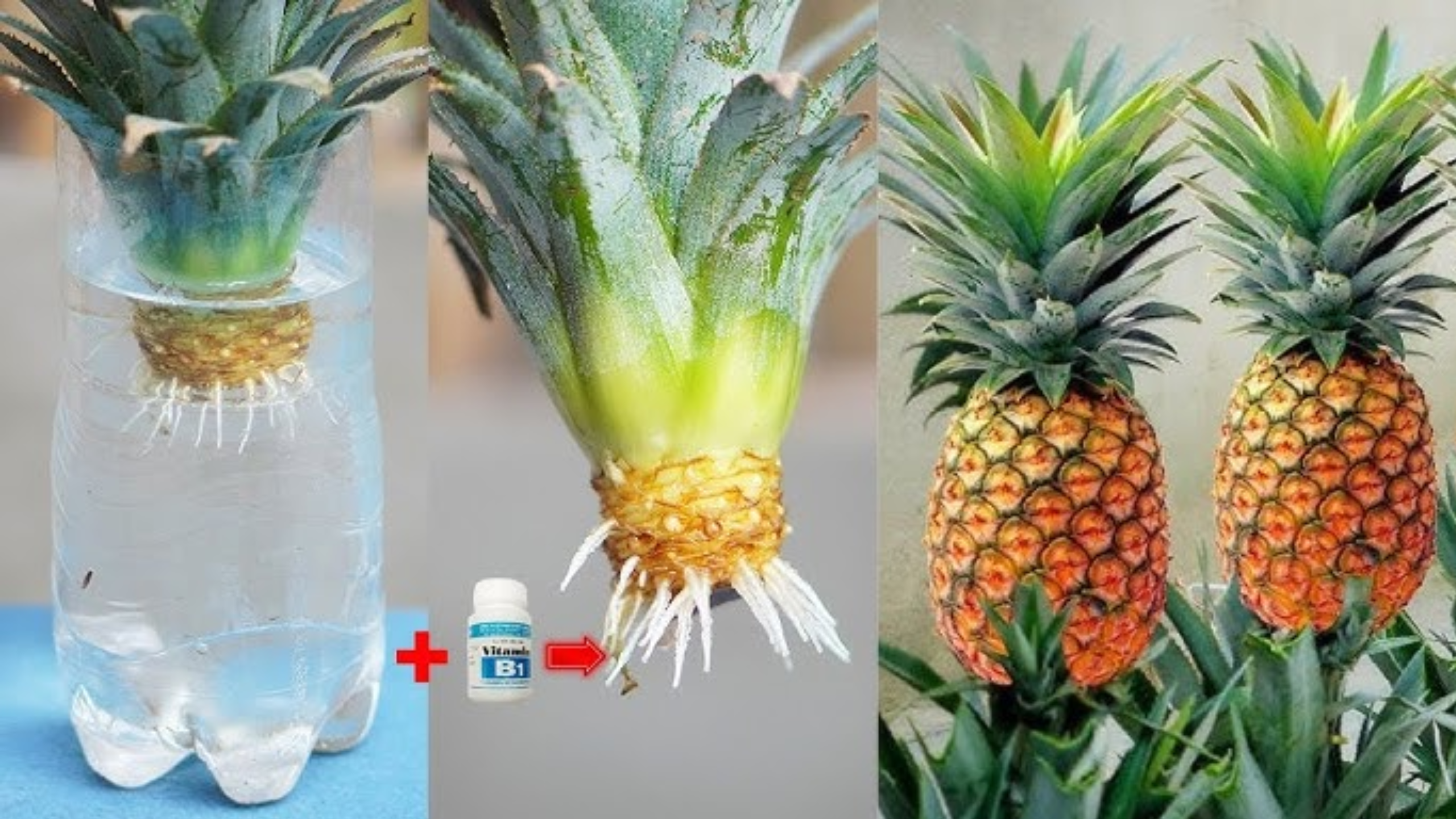Have you ever thought about growing your own pineapple right in the comfort of your home? It might sound ambitious, but with a little patience and the right approach, you can cultivate a tropical treasure in your own space. Whether you have a small balcony, a sunny windowsill, or a backyard garden, it’s possible to turn a pineapple top into a lush, fruit-bearing plant. Here’s a comprehensive guide to help you succeed in growing pineapples in pots.
Choosing the Perfect Container
The first step is selecting an appropriate pot. Pineapples need enough space to grow but also require good drainage to prevent root rot.
- Size: Opt for a large container, ideally around 5 gallons (about 20 liters). A bigger pot gives the roots plenty of room to develop, which promotes healthy growth and fruit production.
- Material: Choose a clay or plastic pot with drainage holes. Ensure these holes are unobstructed, as excess water needs to escape to avoid waterlogged soil.
- Drainage: Enhance drainage by adding a layer of gravel or small stones at the bottom of the container. This helps excess water drain away more efficiently.
Preparing the Potting Mix
Pineapples thrive in well-draining, nutrient-rich soil. Here’s how to prepare an ideal growing medium:
- Soil mixture: Use high-quality potting mix designed for tropical plants or vegetables.
- Drainage additives: Mix in perlite, coarse sand, or small pebbles to improve aeration and drainage.
- Organic matter: Incorporate compost or organic fertilizer to provide essential nutrients for the plant’s development.
This combination ensures your pineapple’s roots stay healthy and oxygenated, reducing the risk of diseases.
Preparing the Pineapple Top

The next step involves preparing the crown or top of the pineapple.
- Select a ripe pineapple: Look for a fruit with vibrant, yellow-orange skin and healthy green leaves.
- Remove the crown: Grip the leafy top firmly and twist or cut it off, making sure to remove any excess fruit pulp attached to the base.
- Clean the crown: Gently strip off some of the lower leaves to expose the stem. Remove any remaining fruit residue to prevent rot.
- Dry the crown: Let it sit in a dry, shady spot for 2-3 days. This allows the cut surface to callous over, reducing the risk of rot when planted.
Planting the Pineapple Crown
Once your crown has dried, it’s time to plant it.
- Position: Insert the crown into the prepared soil, pressing gently to secure it. The base should be slightly above soil level to prevent water from collecting around the crown.
- Depth: Plant the crown about an inch deep into the soil.
- Stabilize: Gently press the soil around the base to eliminate air pockets.
This initial step sets the foundation for a healthy, growing pineapple plant.
Providing Adequate Water and Sunlight
Pineapples love sunlight and consistent moisture.
- Lighting: Place your pot in a spot that receives 6-8 hours of direct sunlight daily. A sunny balcony or windowsill works well.
- Watering: Keep the soil slightly moist but not soaked. Water whenever the top inch of soil feels dry. Overwatering can cause root rot, so moderation is key.
- Humidity: Pineapples enjoy higher humidity levels. If indoors, occasional misting can mimic tropical conditions.
Caring for Your Pineapple Plant
Regular maintenance boosts your plant’s growth and prepares it for fruiting.
- Fertilization: Feed your pineapple plant every 2-3 months with a balanced, water-soluble fertilizer. Use a formulation high in potassium to promote flowering and fruiting.
- Pruning: Remove any yellowing or dead leaves to encourage healthy growth and prevent pests.
- Repotting: As the plant grows, you might consider repotting it into a larger container to accommodate its expanding roots.
Patience Is Key
Growing pineapples is a test of patience—they grow slowly.
- Growth timeline: It can take anywhere from 18 to 24 months for your plant to produce a ripe fruit.
- Consistency: Regular care, proper watering, sufficient sunlight, and good nutrition are essential for a successful harvest.
While waiting, enjoy observing your tropical plant flourish! Your dedication will pay off when it finally rewards you with a sweet, homegrown pineapple.
Harvesting Your Homegrown Pineapple
Once the pineapple turns a deep golden yellow from top to bottom, it’s ready to harvest.
- Signs of ripeness: The fruit should emit a sweet aroma, and the skin will look vibrant and firm.
- Picking: Gently twist or cut the pineapple from the plant, avoiding damage to the leaves and crown.
- Post-harvest: Cut off the leafy crown, and enjoy your freshly grown, delicious pineapple.
Final Tips for Success
Growing pineapples at home is a rewarding challenge that connects you to nature and the tropical flavors you love. Be patient, attentive, and consistent with your care routine. Over time, your plant will thrive, bringing a bit of the tropics into your daily life.
Are you ready to start your pineapple journey? Do you have a sunny spot and a container waiting? With a little effort, you’ll be sipping fresh pineapple juice from plants you’ve nurtured yourself.


https://je-tall-sf-marketing-51.b-cdn.net/research/je-tall-sf-marketing-(477).html
So long as you’ve received the soonlyweds’ approval, there’s absolutely nothing wrong with an allover sequin gown.
https://storage.googleapis.com/digi467sa/research/digi467sa-(99).html
This glamorous robe in warm and rich gold enhances all pores
and skin tones and pairs fantastically with gold and silver equipment.
https://digi653sa.netlify.app/research/digi653sa-(444)
Purchases made through links on this web page might earn us a commission.
https://objectstorage.ap-tokyo-1.oraclecloud.com/n/nrswdvazxa8j/b/digi500sa/o/research/digi500sa-(165).html
One of our favourite issues about Karen Kane is that they’re size inclusive and have options for all sizes.
https://je-tall-marketing-781.fra1.digitaloceanspaces.com/research/je-marketing-(479).html
If the Bridesmaids are in a cornflower blue, for
example, a navy and cornflower outfit would look nice
in the photos.
https://je-sf-tall-marketing-709.b-cdn.net/research/je-marketing-(464).html
The bridesmaids collected the recipes and created them right into a newlyweds
cookery e-book that they gave the couple up their day.
https://jekyll.s3.us-east-005.backblazeb2.com/20250729-1/research/je-marketing-(371).html
Usually a nice knee length costume is perfect to beat
the recent climate.
https://digi654sa.netlify.app/research/digi654sa-(406)
The reviews are constructive though appear to report you must order a measurement up.
https://digi598sa.z8.web.core.windows.net/research/digi598sa-(305).html
It’s important to ensure that any head items don’t
swamp your frame, and doesn’t hide your face.
https://storage.googleapis.com/digi470sa/
Frumpy, shapeless mother of the bride attire are a thing of
the past!
https://je-tall-marketing-779.tor1.digitaloceanspaces.com/research/je-marketing-(125).html
Look for clothes in champagne, navy and even black (yes, it’s totally fashionable to wear black to a wedding!)
for a refined shade palette.
https://digi67sa.sfo3.digitaloceanspaces.com/research/digi66sa-(216).html
Speak to your daughter in regards to the really feel of the wedding day; is it
a black tie affair?
https://storage.googleapis.com/digi461sa/research/digi461sa-(242).html
Clean strains and a formed waist make this a timeless and elegant mom of the bride gown with
a flattering silhouette.
https://objectstorage.ap-tokyo-1.oraclecloud.com/n/nrswdvazxa8j/b/digi510sa/o/research/digi510sa-(208).html
The dress is figure-hugging and provides a simple silhouette.
https://digi654sa.netlify.app/research/digi654sa-(402)
You’ll simply glow in this shimmering gold robe by Aidan Mattox.
https://je-tall-marketing-810.fra1.digitaloceanspaces.com/research/je-marketing-(118).html
That stated, having such a broad variety of choices might really feel a little overwhelming.
https://storage.googleapis.com/digi460sa/research/digi460sa-(186).html
This mother’s knee-length patterned costume perfectly matched the mood of her
child’s outside marriage ceremony venue.
https://objectstorage.ap-tokyo-1.oraclecloud.com/n/nrswdvazxa8j/b/digi504sa/o/research/digi504sa-(238).html
The large florals with the black background are significantly
on development and the ruching adds a flattering
factor.
https://digi55sa.nyc3.digitaloceanspaces.com/research/digi55sa-(499).html
Make certain to let the mom of the groom know what you
may be wearing.
https://digi653sa.netlify.app/research/digi653sa-(339)
I have 2 kids who have actually the age of getting maried 30 and 34.
https://storage.googleapis.com/digi469sa/research/digi469sa-(115).html
This also helps leave time for delivery in case the costume takes longer than anticipated
to arrive.
Expliciete inhoud sites bieden een verscheidenheid aan video’s voor volwassen entertainment.
Kies voor gegarandeerde platforms voor een veilige ervaring.
my site LESBIAN PORN VIDEOS